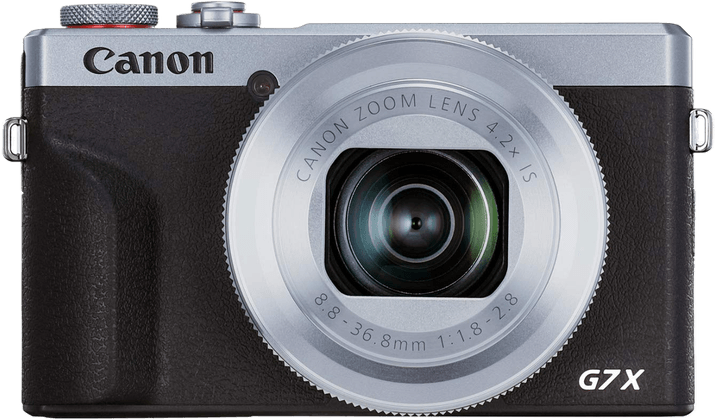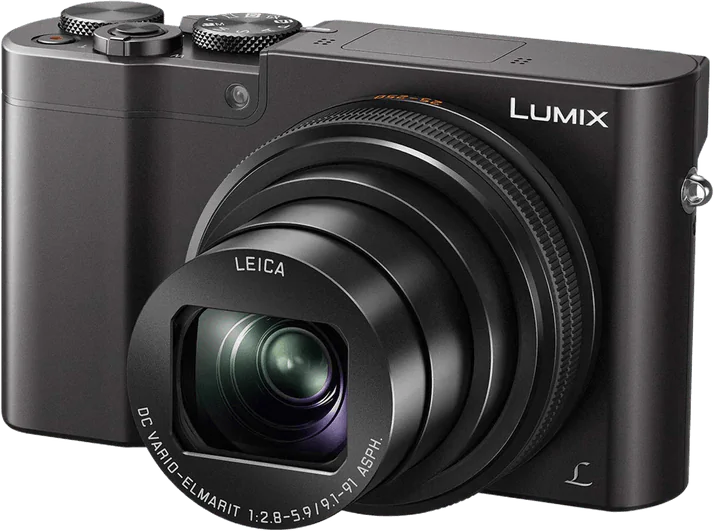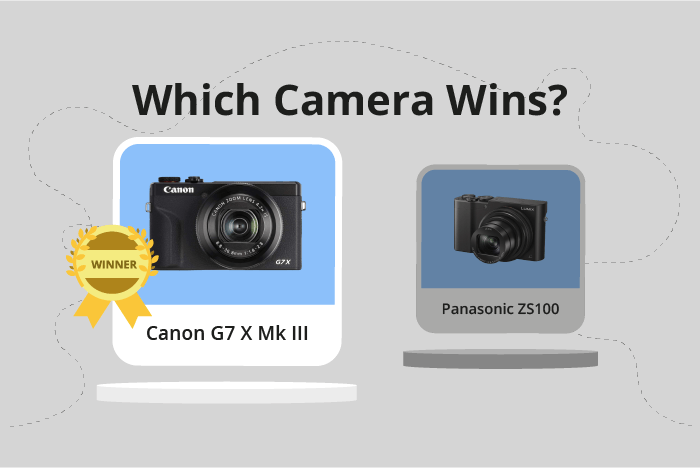Canon PowerShot G7 X Mark III vs Panasonic Lumix DMC ZS100 Comparison
Canon PowerShot G7 X Mark III

Panasonic Lumix DMC ZS100

The Canon PowerShot G7 X Mark III edges out the Panasonic Lumix DMC ZS100 with a score of 59/100 compared to 58/100. Both cameras are compact and share similar specifications, such as size and weight. The G7 X Mark III measures 105x61x41mm and weighs 304g, while the ZS100 is slightly larger at 111x65x44mm and weighs 312g.
The G7 X Mark III has the advantage of being a more recent release, coming out in 2019 with a launch price of $749. This gives it a slight edge in terms of updated technology and features. On the other hand, the ZS100 was released in 2016 and had a lower launch price of $699, making it a more affordable option at the time.
While both cameras have their strengths, the Canon PowerShot G7 X Mark III’s higher score and more recent release date make it a better choice for those seeking updated technology. However, the Panasonic Lumix DMC ZS100 remains a viable option for budget-conscious consumers.
Canon PowerShot G7 X Mark III vs Panasonic Lumix DMC ZS100 Overview and Optics
The Panasonic Lumix DMC ZS100 triumphs over the Canon PowerShot G7 X Mark III in optics, scoring 61/100 compared to the Canon’s 57/100. Both cameras share several specifications, including 20 megapixels, CMOS sensor type, a 1″ sensor size, fixed lens mount, and image stabilization.
The Panasonic ZS100 outperforms the Canon G7 X Mark III in a few key areas. The most notable difference is the DXOMARK score for the sensor, where the Panasonic has a score of 71, compared to the Canon’s 58. This gap shows that the Panasonic ZS100 has a superior sensor, which translates to better image quality. Additionally, the Panasonic camera boasts the Venus Engine processor, while the Canon uses the Digic 8 processor. Although both processors are efficient, the Venus Engine is known for its excellent image processing capabilities, giving the Panasonic ZS100 an edge.
On the other hand, the Canon G7 X Mark III has a faster shooting speed of 30, which is three times higher than the Panasonic ZS100’s shooting speed of 10. This advantage allows the Canon camera to capture fast-moving subjects more effectively, making it a better choice for action photography.
Taking these factors into account, the Panasonic Lumix DMC ZS100 comes out on top in terms of optics, largely due to its superior sensor and image processing. However, the Canon PowerShot G7 X Mark III excels in capturing fast-moving subjects, making it a strong contender for action photography. Ultimately, the choice between these cameras will depend on the specific needs and preferences of the photographer.
Canon PowerShot G7 X Mark III vs Panasonic Lumix DMC ZS100 Video Performance
The Canon PowerShot G7 X Mark III outperforms the Panasonic Lumix DMC ZS100 in video capabilities with a score of 91/100 compared to the latter’s 69/100. Both cameras share some common specifications, such as 4K max video resolution and max video dimensions of 3840 x 2160. However, there are significant differences that set them apart.
The Canon PowerShot G7 X Mark III excels with its 120fps max video frame rate, which is double the Panasonic Lumix DMC ZS100’s 60fps. This higher frame rate allows for smoother and more detailed slow-motion video capture. Additionally, the G7 X Mark III has built-in time-lapse functionality, which the ZS100 lacks. This feature enables users to create stunning time-lapse videos without the need for additional equipment or software.
In contrast, the Panasonic Lumix DMC ZS100 does not offer any notable advantages in video capabilities over the Canon PowerShot G7 X Mark III. Its lower video score and fewer features make it a less desirable choice for those prioritizing video performance.
To conclude, the Canon PowerShot G7 X Mark III is the superior camera for video capabilities, thanks to its higher frame rate and built-in time-lapse functionality. The Panasonic Lumix DMC ZS100, while still offering 4K resolution, falls short in comparison due to its lower frame rate and lack of time-lapse feature.
Canon PowerShot G7 X Mark III vs Panasonic Lumix DMC ZS100 Features and Benefits
The Canon PowerShot G7 X Mark III emerges as the winner with a feature score of 70/100, while the Panasonic Lumix DMC ZS100 trails behind with a score of 57/100. Both cameras share several specifications, including a 3-inch screen size, 1040000-dot screen resolution, touchscreen capabilities, absence of GPS, and WIFI connectivity.
The Canon PowerShot G7 X Mark III outperforms the Panasonic Lumix DMC ZS100 in certain aspects. It has a flip screen, which is useful for capturing images and videos from various angles and for vlogging purposes. Additionally, the Canon PowerShot G7 X Mark III is equipped with Bluetooth connectivity, allowing for seamless file transfers and remote control options.
On the other hand, the Panasonic Lumix DMC ZS100 does not offer any significant advantages over the Canon PowerShot G7 X Mark III, considering the features compared in this analysis. It lacks both a flip screen and Bluetooth connectivity, which limits its flexibility and convenience in comparison to the Canon model.
Considering these points, the Canon PowerShot G7 X Mark III proves to be the superior camera in terms of features. Its flip screen and Bluetooth connectivity contribute to its higher score and make it a more versatile and user-friendly option. The Panasonic Lumix DMC ZS100, while still a competent camera, falls short in comparison to the Canon model due to its limitations in these areas. Ultimately, potential buyers should weigh these differences in features when deciding between the two cameras.
Canon PowerShot G7 X Mark III vs Panasonic Lumix DMC ZS100 Storage and Battery
The Panasonic Lumix DMC ZS100 wins in the storage and battery comparison, scoring 29 points, while the Canon PowerShot G7 X Mark III scores 27 points. Both cameras have one memory card slot and accept SD, SDHC, and SDXC cards. Additionally, both offer USB charging capabilities.
The Lumix DMC ZS100 outperforms the PowerShot G7 X Mark III in battery life, providing 300 shots per charge compared to the G7 X Mark III’s 235 shots. This longer battery life proves advantageous for extended photography sessions. However, the G7 X Mark III uses the NB-13L battery type, which is UHS-I compatible, offering faster performance when using compatible memory cards.
While the Lumix DMC ZS100 has a slightly better score in storage and battery, the difference is minimal. The extended battery life of the ZS100 is a notable advantage, but the G7 X Mark III’s UHS-I compatibility may offer improved performance for some users. Ultimately, both cameras provide reliable storage and battery options for photographers.
Canon PowerShot G7 X Mark III vs Panasonic Lumix DMC ZS100 – Our Verdict
Are you still undecided about which camera is right for you? Have a look at these popular comparisons that feature the Canon PowerShot G7 X Mark III or the Panasonic Lumix DMC ZS100:
- Panasonic Lumix DMC ZS100 vs Lumix ZS200 (TZ200)
- Canon PowerShot G7 X Mark III vs Sony Cyber-shot DSC-RX100 VII
- Canon PowerShot G7 X Mark II vs PowerShot G7 X Mark III
- Canon PowerShot G5 X Mark II vs PowerShot G7 X Mark III
- Canon PowerShot G7 X Mark III vs Panasonic Lumix ZS200 (TZ200)
- Canon PowerShot G7 X Mark III vs Ricoh GR IIIx

